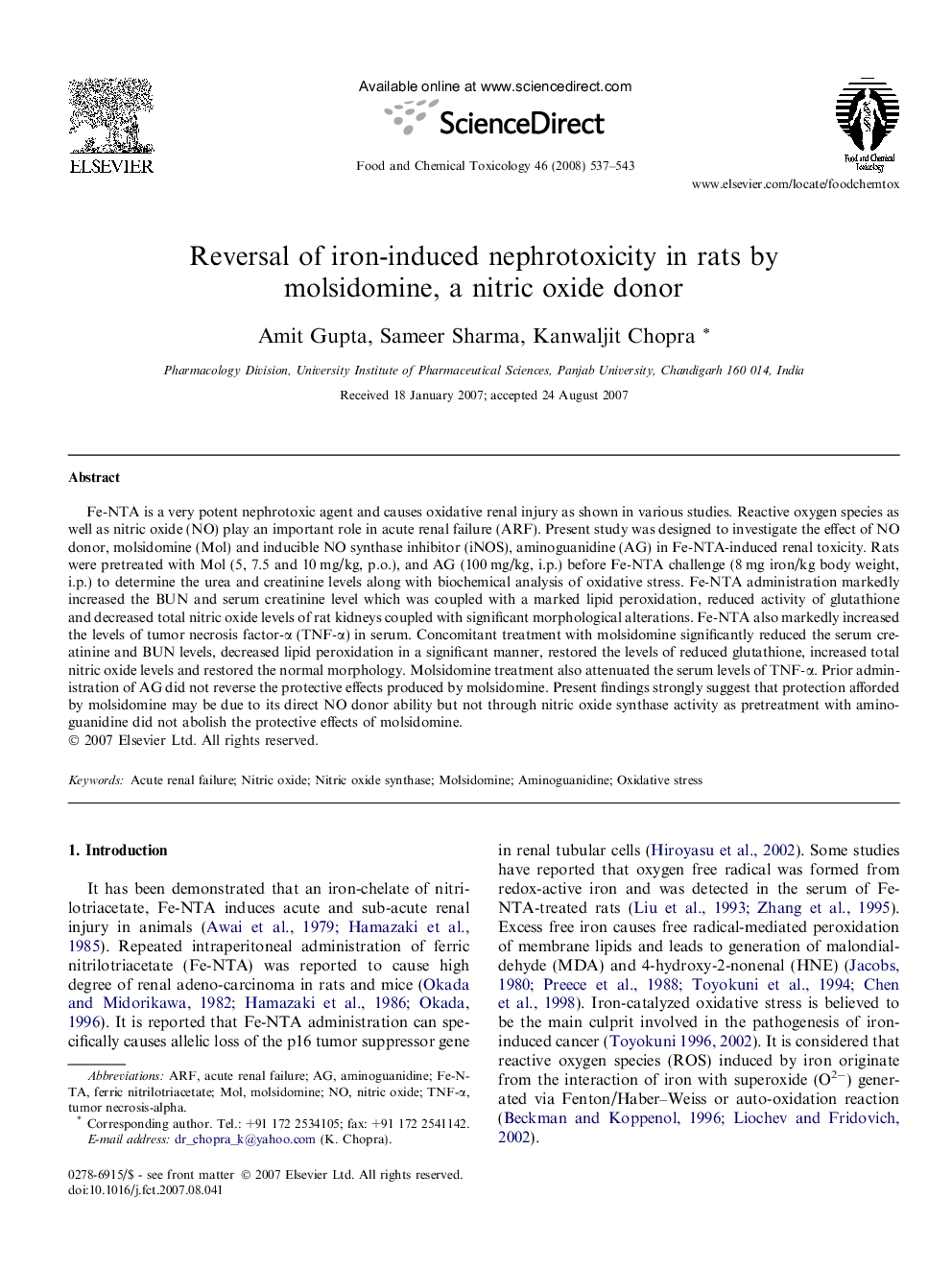| Article ID | Journal | Published Year | Pages | File Type |
|---|---|---|---|---|
| 2587096 | Food and Chemical Toxicology | 2008 | 7 Pages |
Fe-NTA is a very potent nephrotoxic agent and causes oxidative renal injury as shown in various studies. Reactive oxygen species as well as nitric oxide (NO) play an important role in acute renal failure (ARF). Present study was designed to investigate the effect of NO donor, molsidomine (Mol) and inducible NO synthase inhibitor (iNOS), aminoguanidine (AG) in Fe-NTA-induced renal toxicity. Rats were pretreated with Mol (5, 7.5 and 10 mg/kg, p.o.), and AG (100 mg/kg, i.p.) before Fe-NTA challenge (8 mg iron/kg body weight, i.p.) to determine the urea and creatinine levels along with biochemical analysis of oxidative stress. Fe-NTA administration markedly increased the BUN and serum creatinine level which was coupled with a marked lipid peroxidation, reduced activity of glutathione and decreased total nitric oxide levels of rat kidneys coupled with significant morphological alterations. Fe-NTA also markedly increased the levels of tumor necrosis factor-α (TNF-α) in serum. Concomitant treatment with molsidomine significantly reduced the serum creatinine and BUN levels, decreased lipid peroxidation in a significant manner, restored the levels of reduced glutathione, increased total nitric oxide levels and restored the normal morphology. Molsidomine treatment also attenuated the serum levels of TNF-α. Prior administration of AG did not reverse the protective effects produced by molsidomine. Present findings strongly suggest that protection afforded by molsidomine may be due to its direct NO donor ability but not through nitric oxide synthase activity as pretreatment with aminoguanidine did not abolish the protective effects of molsidomine.
